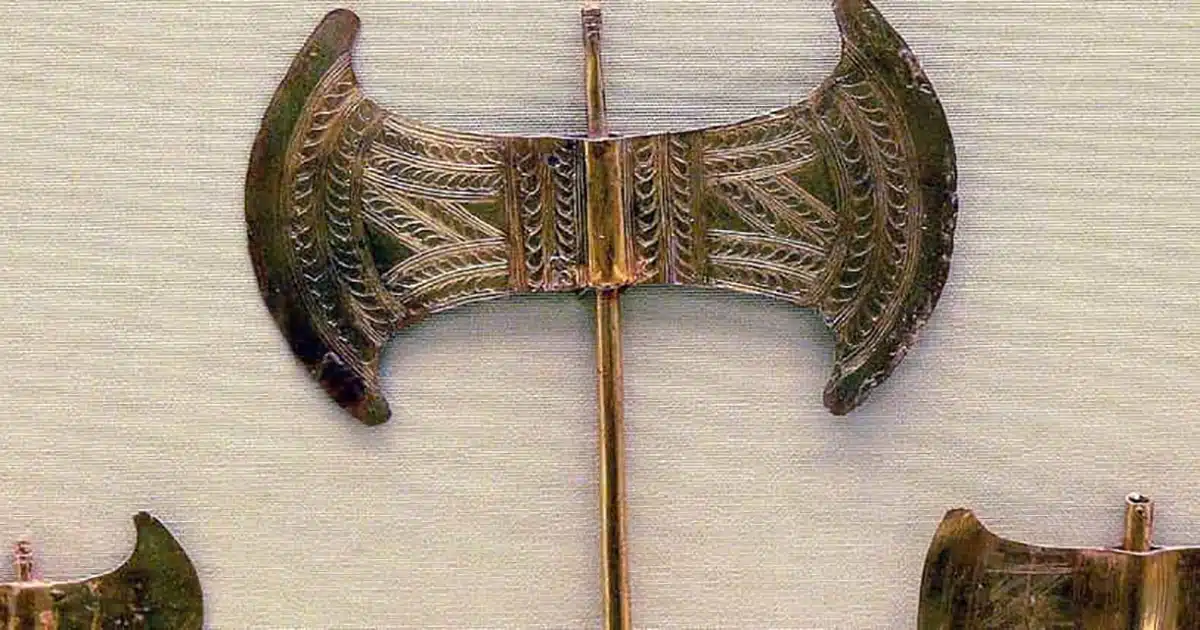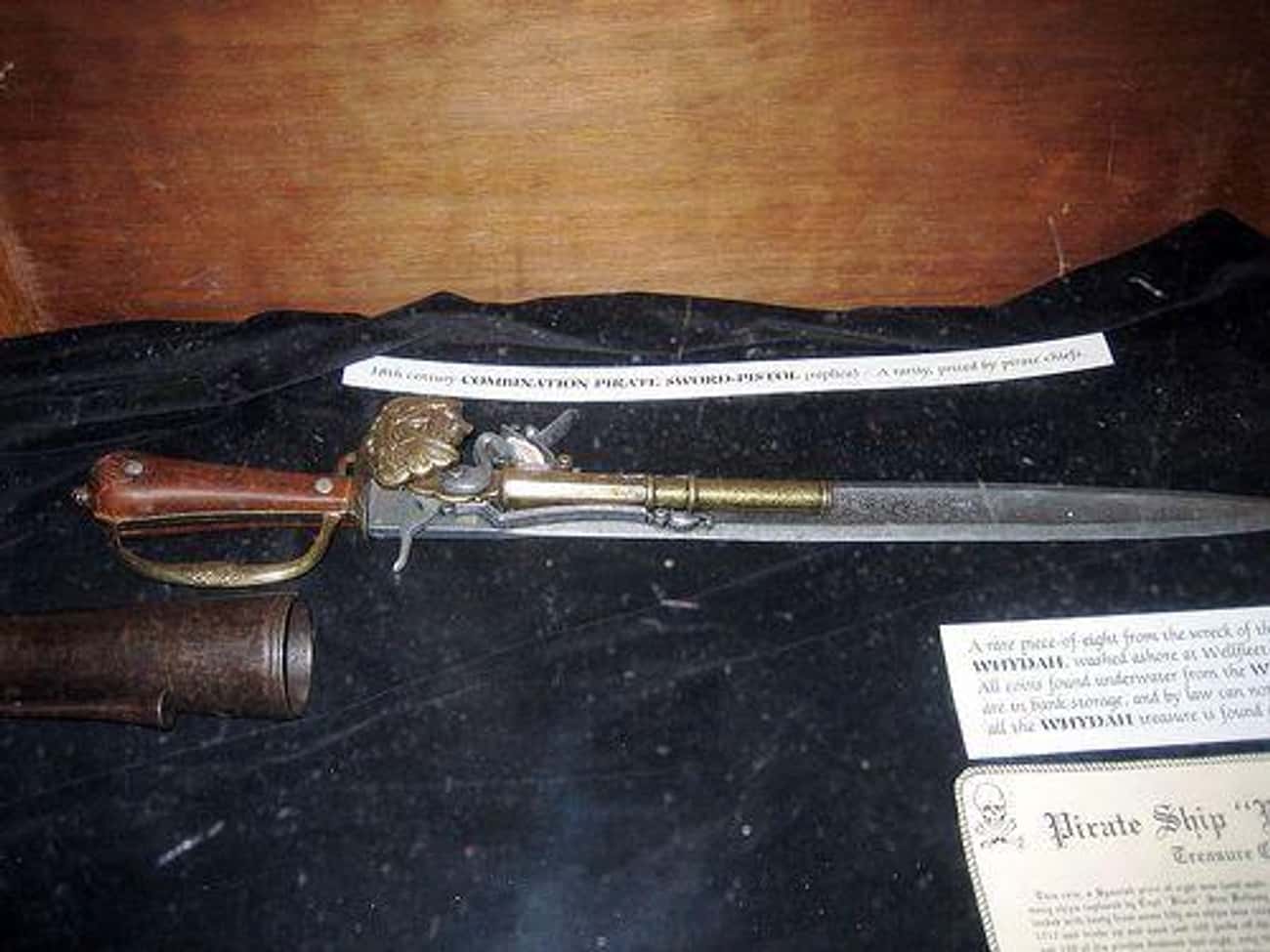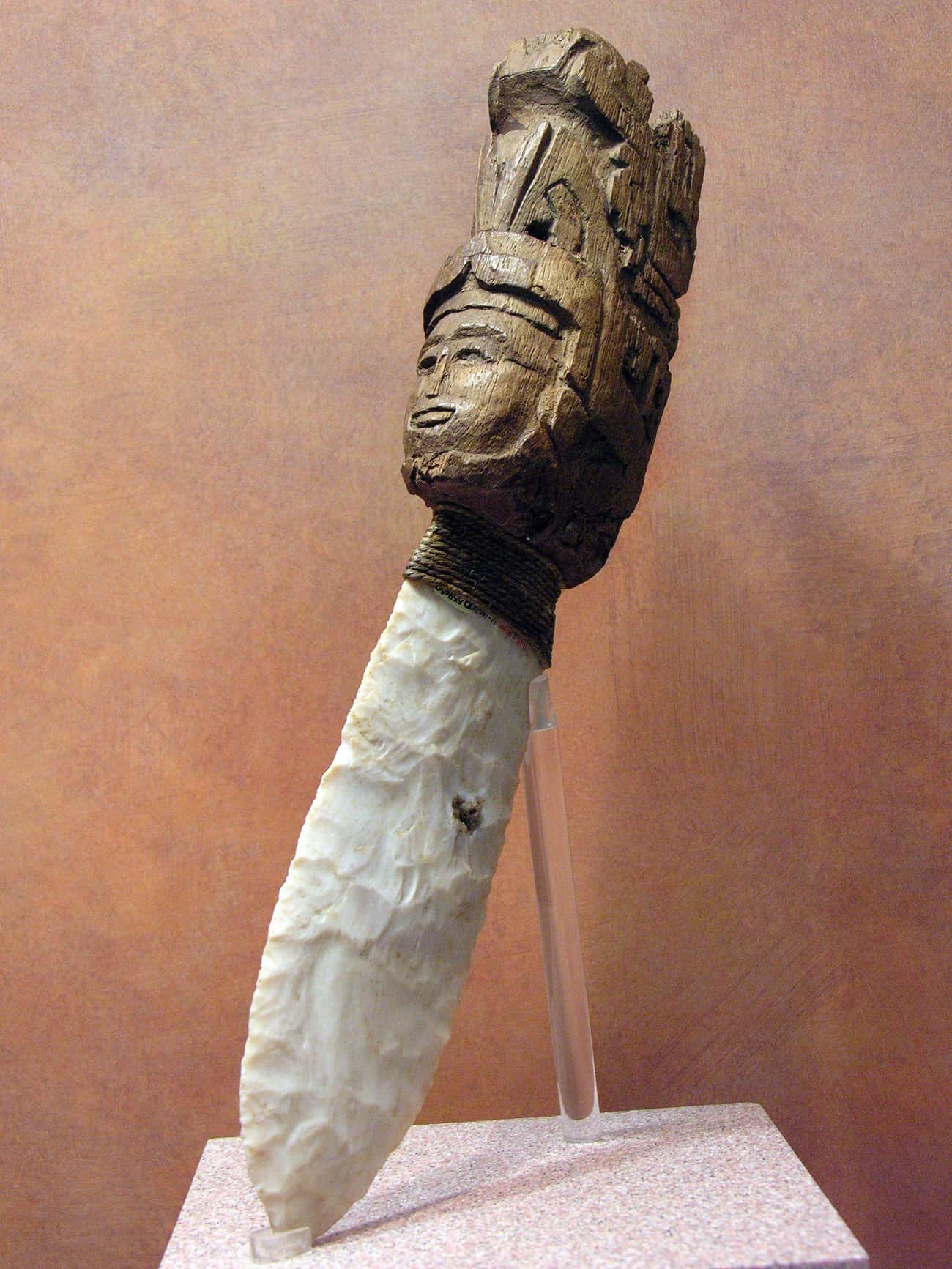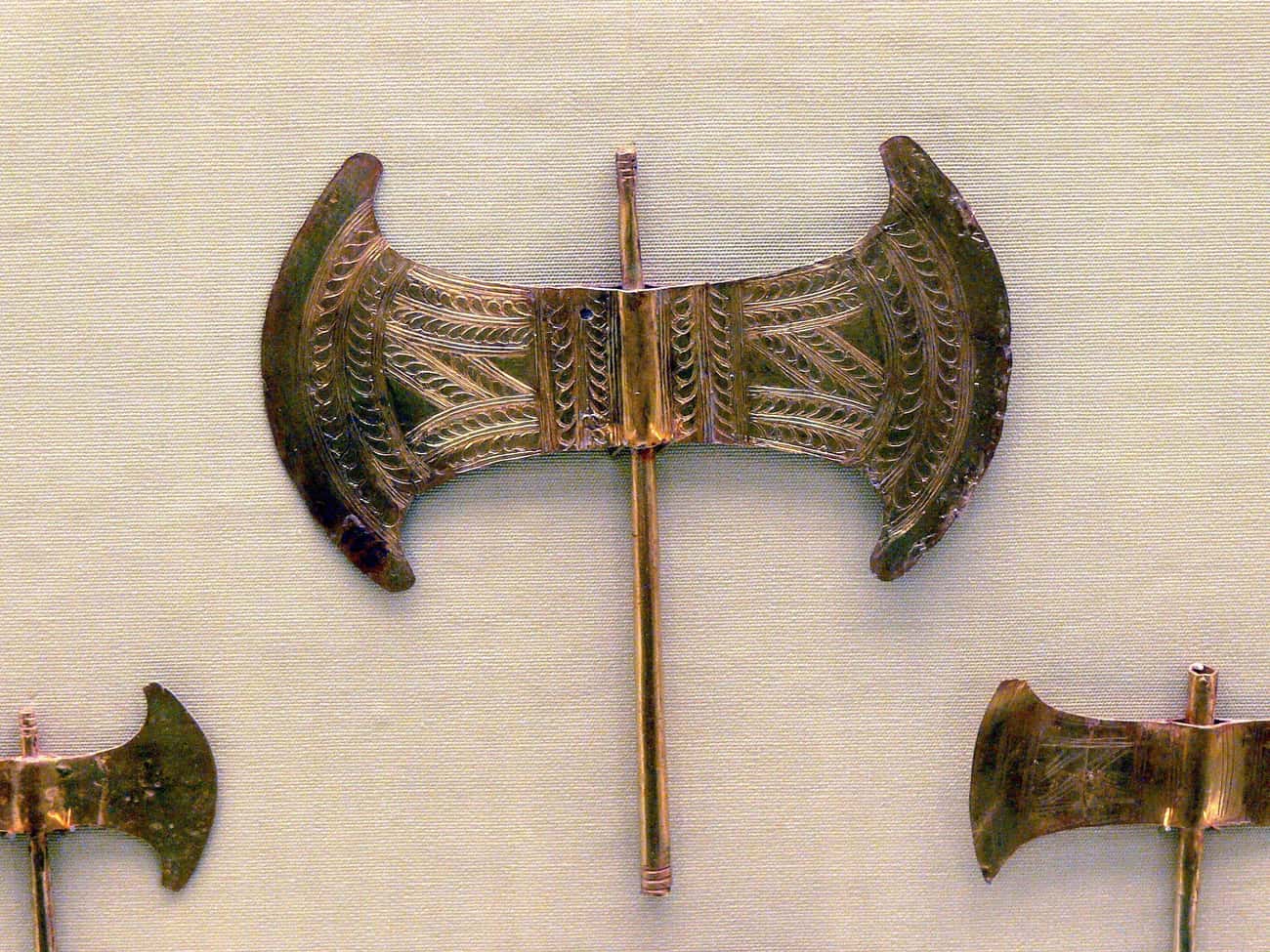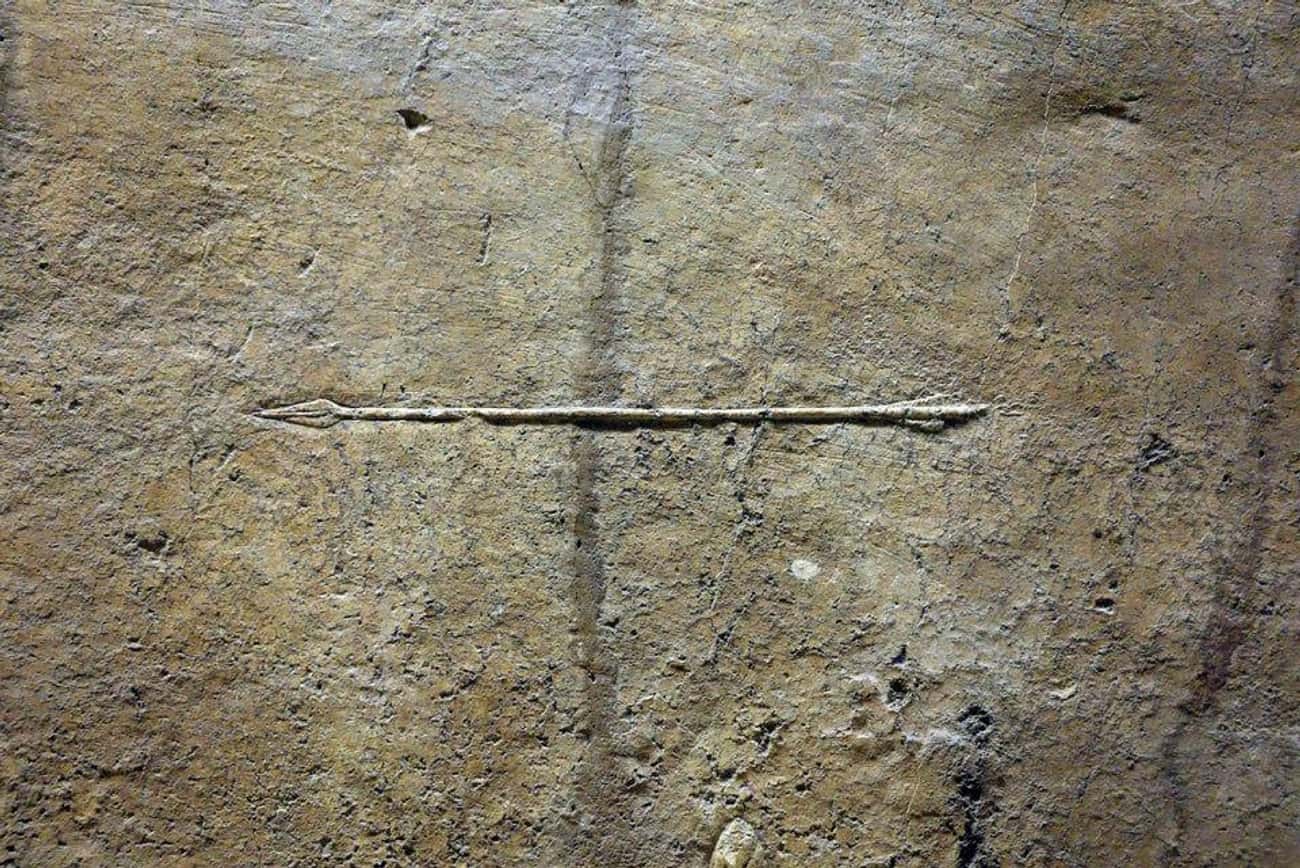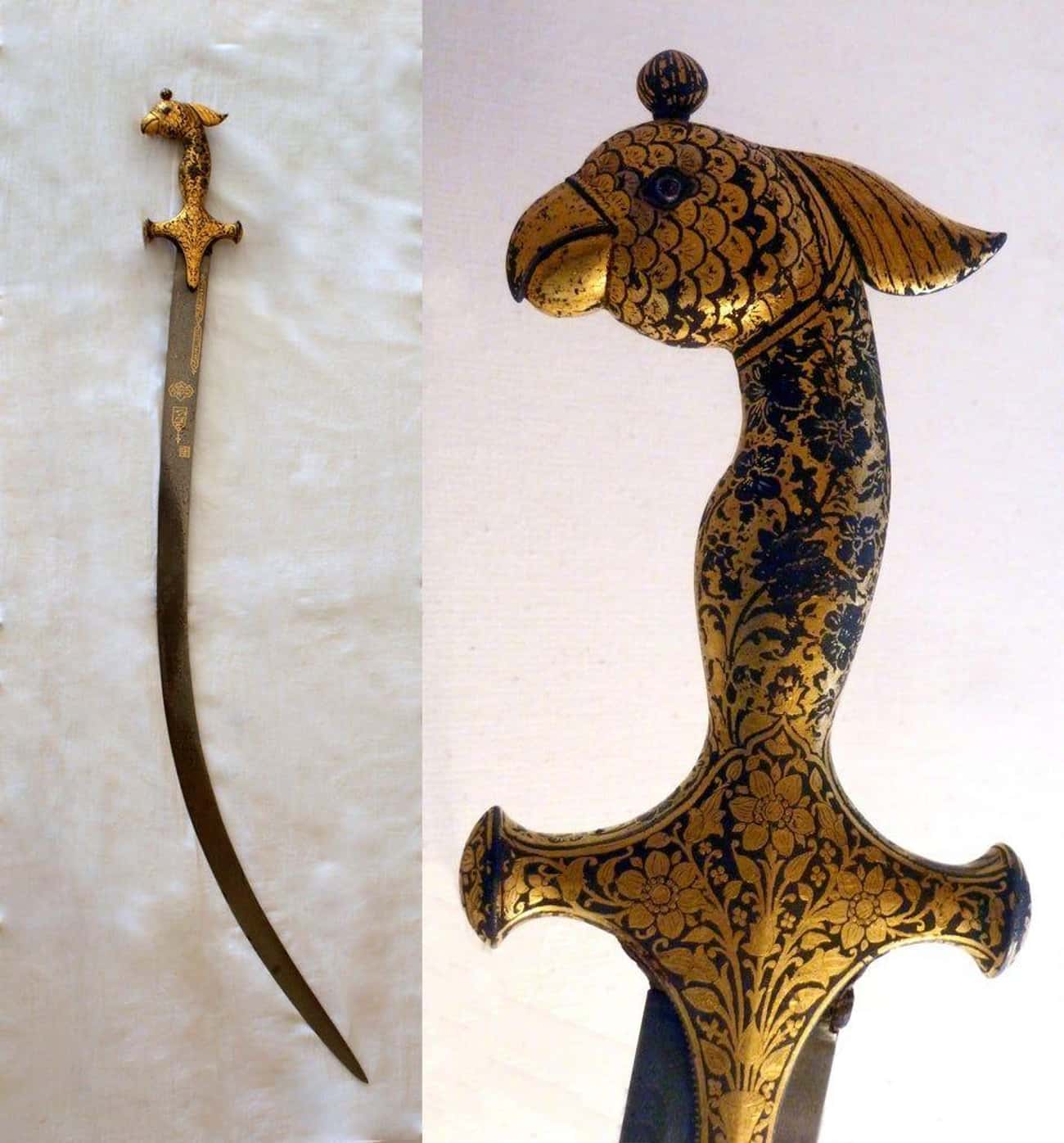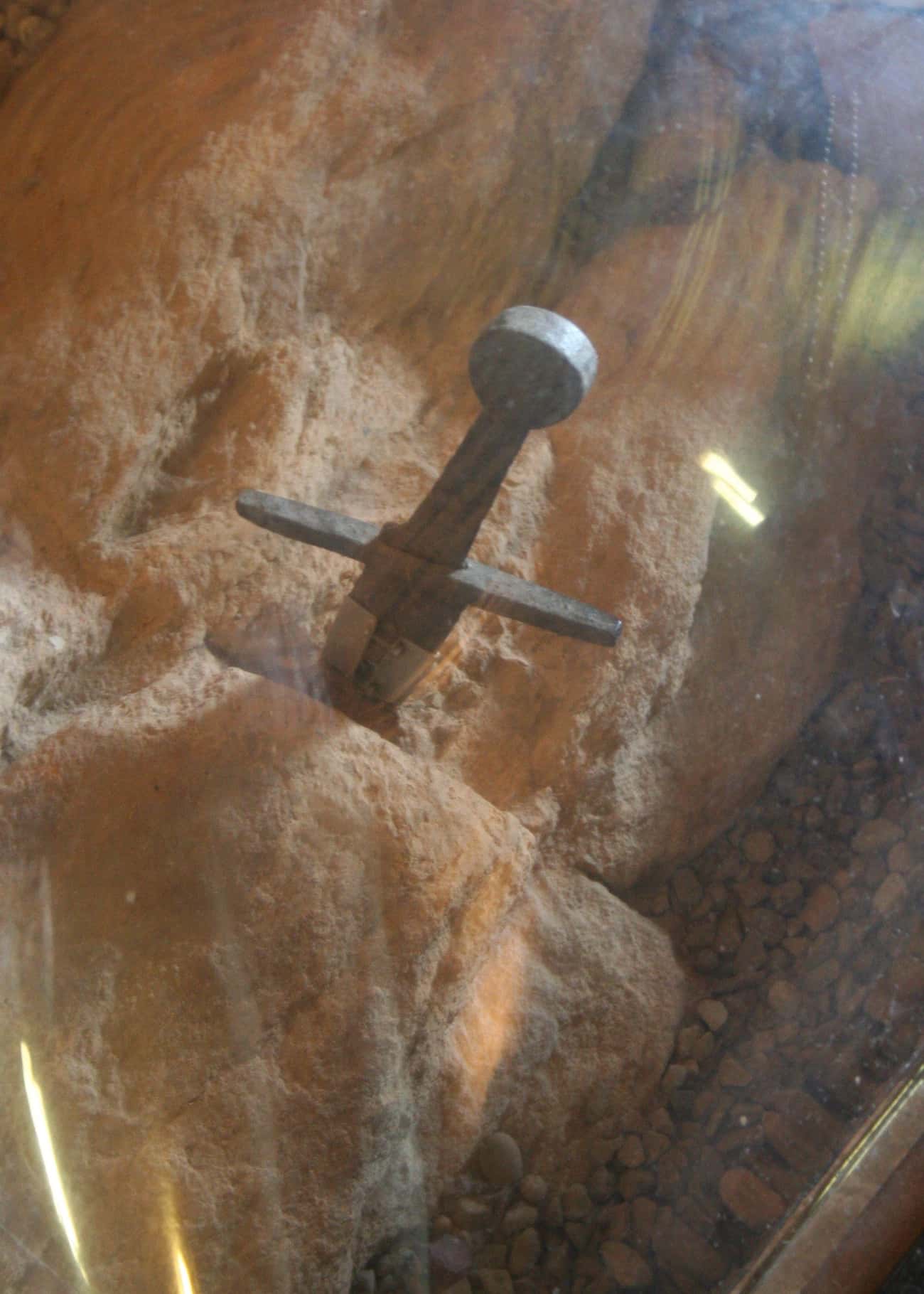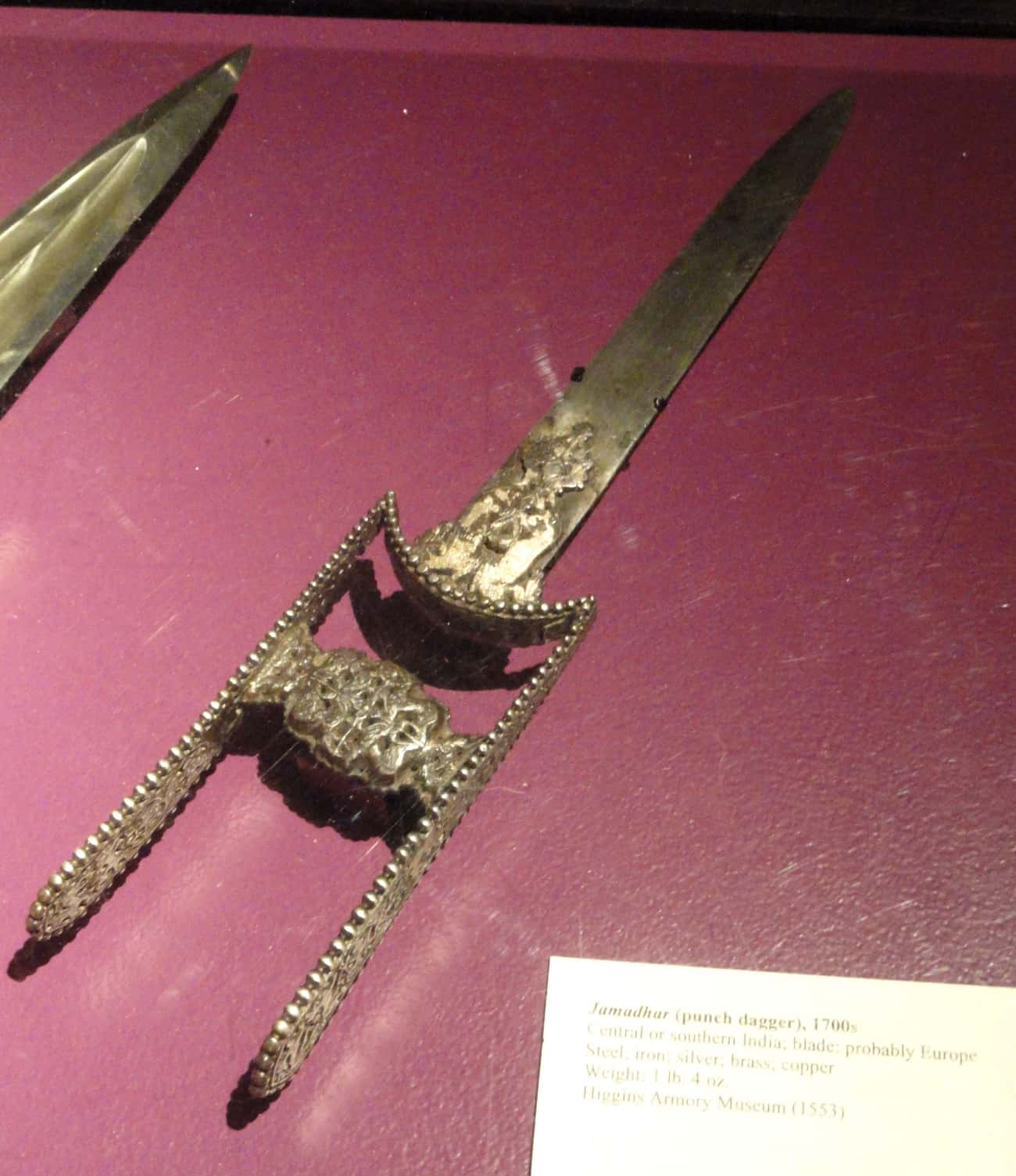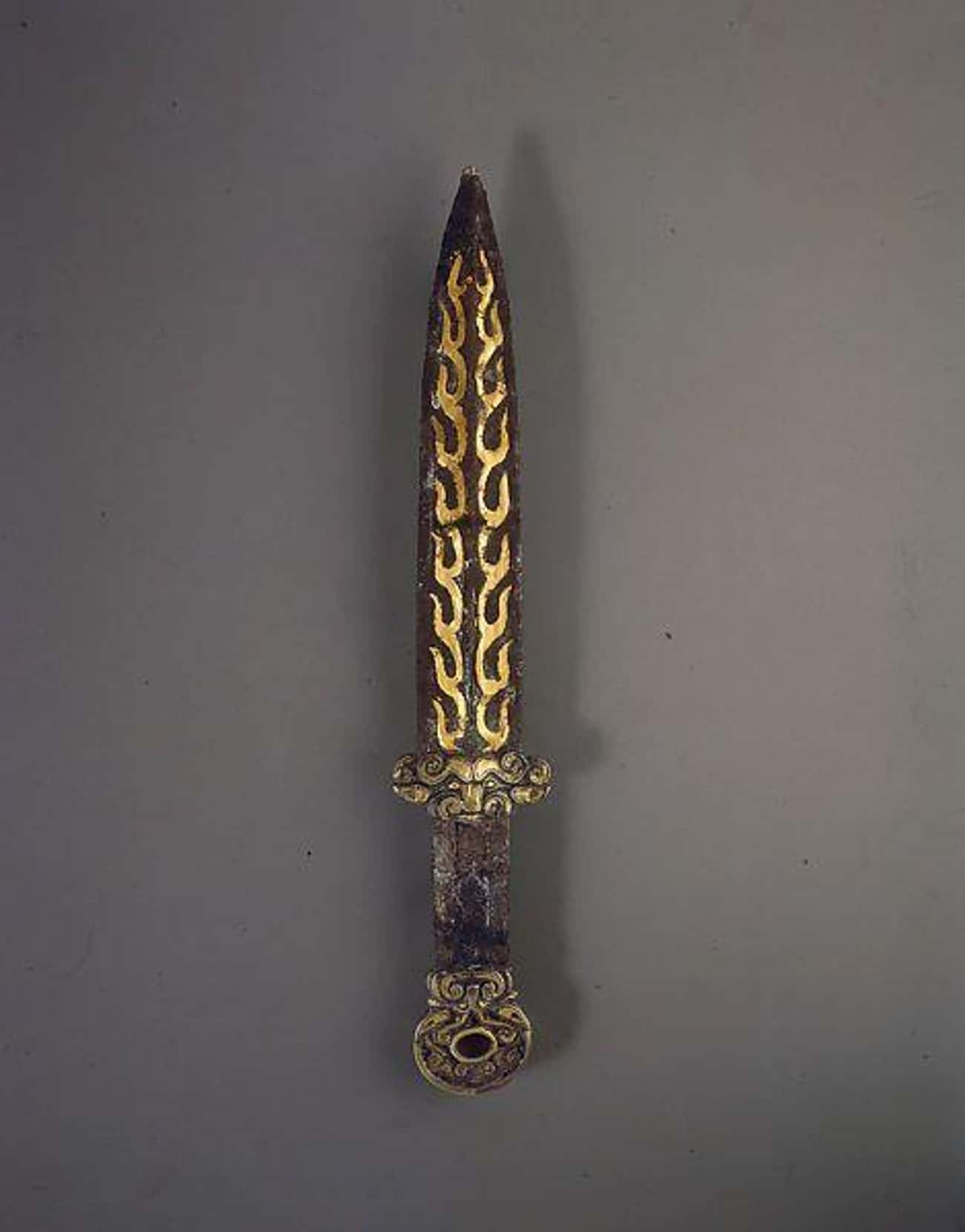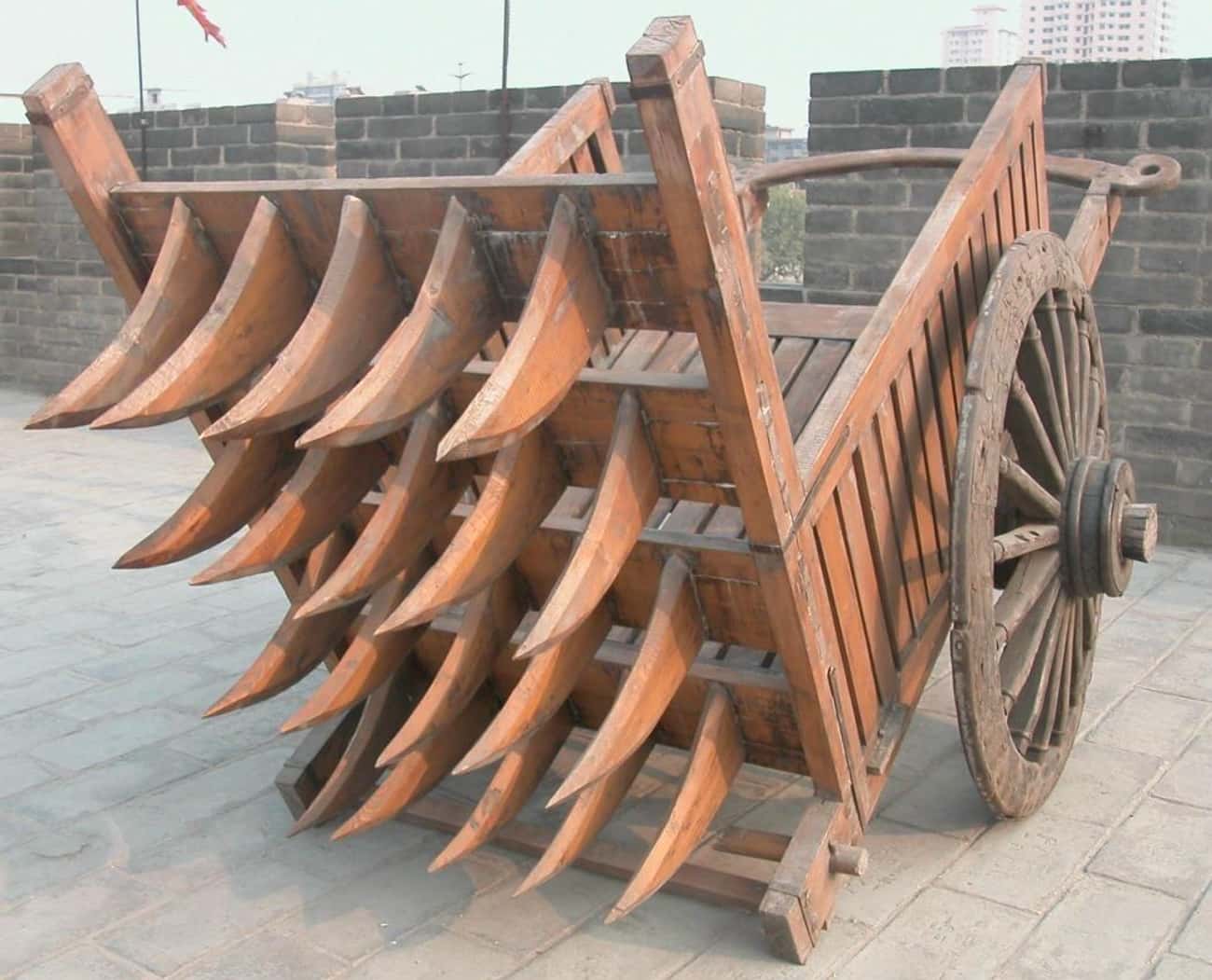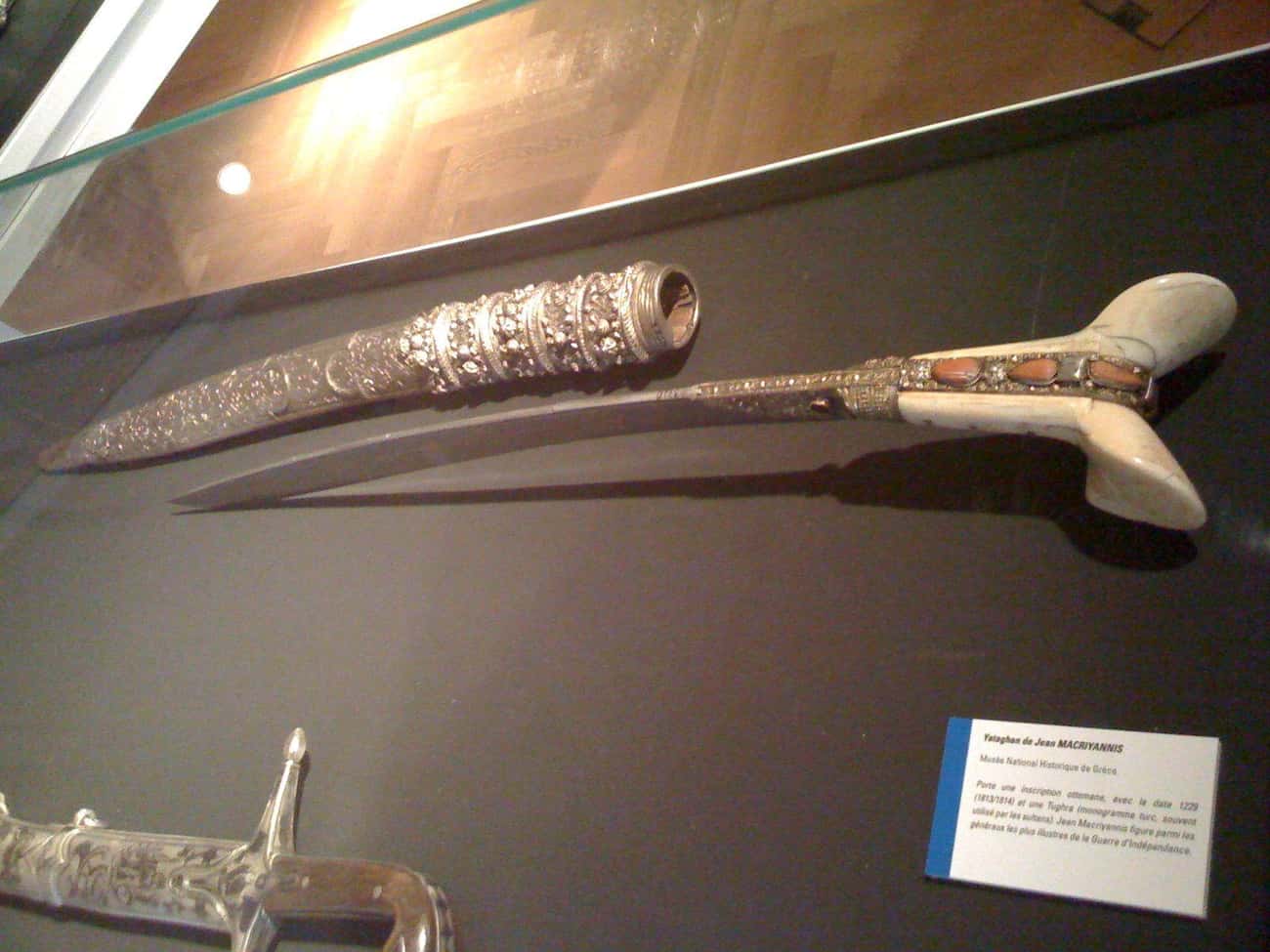If there’s one thing that Game of Thrones and Vikings show us about viewers, it’s that we love a good fight. Aside from the strong warriors, the most important thing about these battles is the weapons they use: axes, daggers, and cannons, oh my! Even though tools have gotten better over time, it’s amazing to see how creative people were when they had less.
Check out the coolest historical weapons we found and vote up the ones that make you say, “Whoa!”
17th-Century Dagger Made Partially From A Meteor
Meteoric iron that fell from the sky in 1621 was used to make the dagger for the Mughal Emperor Jahangir. Jahangir thought that the meteor’s fall was a sign from God.
In his autobiography, The Jahangirnama, Jahangir said that the meteor crash was so scary that it almost scared his people “out of their skins.” When Jahangir’s people got there, they found burned earth and started digging:
The deeper they dug, the hotter it was. Finally they reached a spot where a piece of hot iron appeared.
Once Jahangir had the iron, he had it weighed and told one of his men to “make a sword, a dagger, and a knife” for him. When it was said that the metal would break under the weight of a hammer, it was decided that the “lightning” iron would be mixed with other iron before it was used to make weapon blades. “A spark of imperial lightning” was written on the meteoric iron, which was said to cut very well.
In the 1950s, the dagger was given to the Smithsonian. Debra Diamond, who is in charge of South and Southeast Asian art at the Freer and Sackler galleries at the Smithsonian, said that it was like a “gift from the heavens.”
18th-Century Pirate Pistol
Cutlass flintlock pistols were often used by pirates as they sailed the high seas. They combined the usefulness of a knife for hand-to-hand fighting and the usefulness of a gun for fighting at a distance.
It was a small flintlock pistol that could be held in one hand, but it took a long time to load.
Aztec Sacrificial Knife
Aztec sacrificial knives had wooden handles and flint blades. They were used for ritual sacrifices. This knife looks like it was made to look like the god Xiuhtecuhtli, who was honored during the Aztec month of Izcalli. It is thought to have been found in a cave.
At the ceremony to honor Xiuhtecuhtli, people pretended to be the god of fire and were then burned and killed with a knife.
Minoan Double Ax, Circa 1600 BC
Scholars say that in Minoan culture, the double ax was thought to be a weapon that the sky god used. The double axes found at Knossos on the island of Crete were also called labrys. They may have had something to do with the myth of the palace’s labyrinth, which Daedalus built to keep the Minotaur (half man, half bull) from escaping.
A lot of double axes were made around 1600 BC, and they may have been used as weapons or to cut wood. They are made of bronze and also have parts of gold, ivory, and clay.
A Stone-Preserved Arrow, Seventh Century BC
An Assyrian relief from the 7th century BC shows an arrow that looks like it is in flight as it heads toward its target, a lion.
The arrow is said to have been found in a relief of a lion hunt, which may have been set up to show off King Ashurbanipal’s (668–627 BC) skills as a victorious warrior. It is different from the carved arrows found in other royal reliefs.
Shamshir Curved Sword
The 18th-century shamshir has an Arabic script called Nastaliq written in gold on its single-sided, flat, and curved blade.
According to the description at the Mehrangarh Museum Trust, the intricate pommel-style hilt with a parrot’s head on top of the grip is likely of Mughal or Deccan origin and dates to between the 2nd and 17th centuries.
Galgano Sword, 12th Century
The legend of the sword in the stone has a lot to do with the San Galgano sword. The sword is stuck in the ground where Saint Galgano put it in defiance of his worldly duties. Galgano Guidotti was born in 1148. He went to live alone in the mountains of Tuscany, where he used his sword as a sign of the cross instead of a weapon.
The San Galgano sword was made with metals from the 12th and 13th centuries, which shows when it was made, but it couldn’t have been in the hands of a saint.
18th-Century Katar Push Dagger
Katar daggers are push weapons with H-shaped handles. They come from the Indian subcontinent and were used a lot during the Mughal Empire. To use a push dagger, a person would grip the cross-handle and make a fist, which gave them a strong punch-like thrust.
This dagger is made of steel, iron, silver, and copper, among other metals. It was most often used by nobles for hunting and close combat.
Iron Short Sword, Han Dynasty
The Han short sword is a weapon made for hand-to-hand combat. It has an iron blade with gold decorations. The sword is almost 14.5 inches long and has pictures of flames and clouds. It was found in the tomb of Prince Liu Sheng (d. 113).
During the Han dynasty (206 BC–220 AD), swords were made to be stronger than their predecessors. They were also thought to have spiritual powers that could only be tapped by an expert.
Siege Cart
When trying to take down a castle or other fortification, siege weapons were used to attack with brute force.
In ancient China, siege carts were used to carry ladders, weapons, and supplies. They also protected people and did the damage.
Greek Yatagan, Early 19th Century
The yatagan is a weapon that was made by the Ottoman Turks as early as the mid-1600s. Yannis Makriyannis (1797–1864), a leader in the Greek War of Independence in the early 1800s, used it.
The yatagan has a curved iron blade, but its bone handle is what makes it stand out. Like other weapons of its kind, Makriyannis’s yatagan has a lot of fancy decorations. It also has a Turkish symbol that sultans often use.


